2022 was certainly a productive year full of challenges and triumphs. We established a scientific observatory in Bolivia, expanded across the Amazon with new partners, produced and shared new research on the tipping point, and established a new protected area covering nearly 10,000 acres! As always, our supporters were with us every step of the way and we are forever grateful for their contributions and passion that keep us motivated to keep working to protect the greatest forest on Earth. Below are just a few key highlights from our conservation efforts in 2022.
Establishing a Research Center in the Amazon
In January 2022, we launched the Amazonian Fruits and Climate Change Observatory in the Amazonian department of Pando, Bolivia. The Observatory is the culmination of a 10-month project in collaboration with local Bolivian organizations such as the Inter-Institutional Platform for Articulation of Productive Complexes of Amazonian Fruits (PICFA) and the Departamental Federation of Açai and Amazonian Fruit Harvesters of Pando (FEDAFAP) that focuses on strengthening the management of non-timber forest products in the Bolivian Amazon rainforest such as açaí, Brazil nuts, cacao, and copoazu. Not only do non-timber forest products help prevent deforestation by elevating the value of standing forests, but the diversification of fruits also helps local communities mitigate and adapt to climate change while strengthening their income.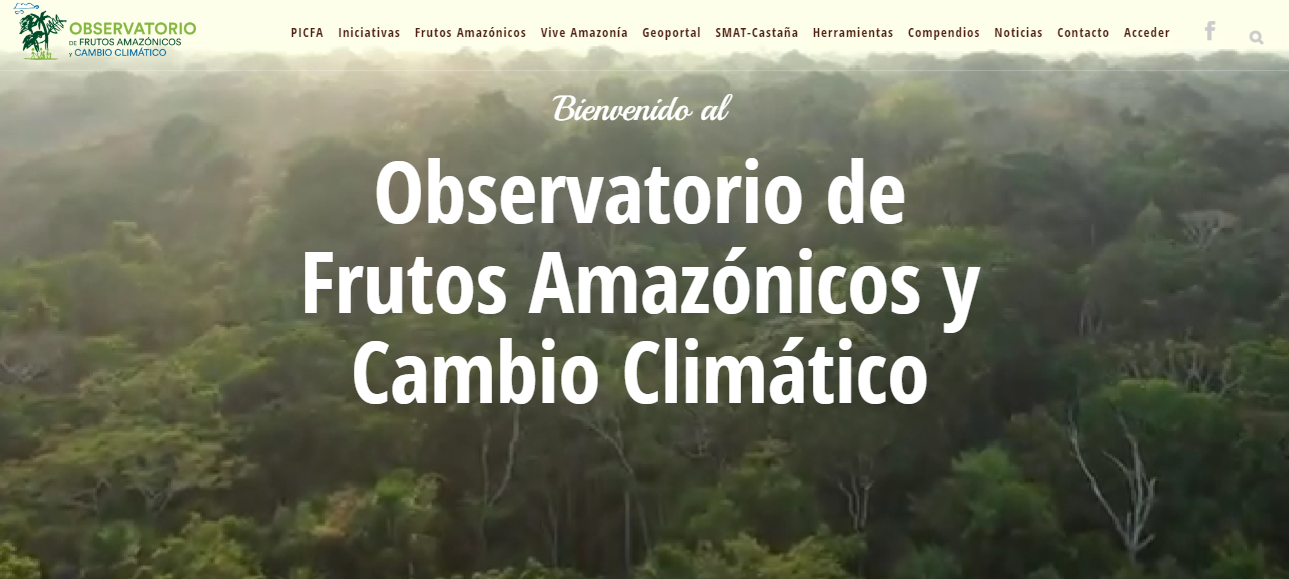
The Amazonian Fruits and Climate Change Observatory is a virtual repository that compiles and shares important information on Amazonian forest products such as Brazil nuts, açaí, cacao, copoazu, majo, and royal palm. Additionally, GIS specialists at the observatory utilize high-resolution satellites to monitor the effects of climate change and the state of the forests in the region. The Observatory also produces market research on the value chains of the region’s main Amazonian fruits and works to develop tools that allow the socio-economic monitoring of a specific harvesters’ initiative and production. Users are also granted access to a compilation of documents with information relevant to climate change and forest-sector-related public policies.
Through the Observatory of Amazonian Fruits and Climate Change, local producers are able to access and share important information, giving them the latest tools, research, and processing protocols to ensure that their products are competitive and reach their highest market-value potential. To spread awareness and build capacity among local communities in utilizing this platform, we have hosted events for producers and harvesters in Pando to provide training and space to share critical solutions that help these communities adapt to the changing climate that increasingly impacts the primary livelihoods for many in the region.
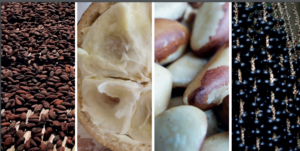 In June, we hosted a webinar that had more than 100 participants from across Pando who joined to learn how to access and utilize the resources, information, and technology available through the Observatory. Through the webinar, we also introduced a user’s guide for how to best utilize the Observatory of Amazonian Fruits and Climate Change, which can be accessed in Spanish here. We also presented important research that corrects misinformation about the link between açai and the parasite causing Chagas disease in the region, which helps establish early detection measures to control and prevent the spread of diseases like Chagas in the processing of Amazonian fruits.
In June, we hosted a webinar that had more than 100 participants from across Pando who joined to learn how to access and utilize the resources, information, and technology available through the Observatory. Through the webinar, we also introduced a user’s guide for how to best utilize the Observatory of Amazonian Fruits and Climate Change, which can be accessed in Spanish here. We also presented important research that corrects misinformation about the link between açai and the parasite causing Chagas disease in the region, which helps establish early detection measures to control and prevent the spread of diseases like Chagas in the processing of Amazonian fruits.
In Pando, the Observatory stands to directly benefit around 87,500 people linked to the harvest of Amazonian fruits, including indigenous and local communities, and nine local enterprises. Thanks to this important center for research and information sharing, deforestation and destructive harvesting techniques are comparatively low in Pando when compared to surrounding regions of the Amazon, making Pando a refuge for lowland wildlife and forest species.
Expanding Across the Amazon with New Partners
Thanks to our strategic collaboration with organizations Fundación EcoCiencia in Ecuador and SOS Orinoco in Venezuela, we saw two great successes with reports from our Monitoring of the Andean Amazon Program (MAAP), that resulted in on-the-ground action taken against illegal mining in the Amazon.
Together with EcoCiencia, we published a report revealing the alarming illegal mining expansion of 173 acres (70 hectares) over four months in Yutzupino, located in the Ecuadorian Amazon’s Napo province. Though the Ecuadorian government carried out a field intervention in January to confirm the illegal activity, it continued to advance, increasing by at least 15 acres (6 hectares).
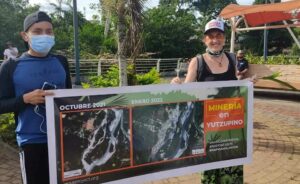
Following the publication of this report, citizen demonstrations against illegal mining activity took place in Tena, the capital city of Napo. Local residents participated in a march against illegal mining, alongside representatives of the organization COICA (Coordinator of Indigenous Organizations of the Amazon River Basin), which advocates for indigenous peoples at the regional and international level, and CONFENIAE (Confederation of Indigenous Nationalities of the Ecuadorian Amazon), a regional organization of indigenous peoples in the Ecuadorian Amazon. Satellite images from this report, showing the alarming side-by-side of increased deforestation, were printed on banners for this march alongside the hashtags in Spanish, “Napo Without Mining”, “Napo Values Life”, and “Napo Resists”. Investigations into those responsible were started at the request of several local organizations.
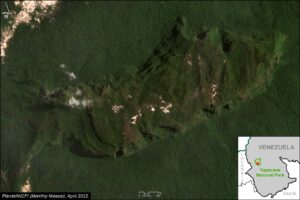 With support from SOS Orinoco, we published MAAP reports #156 and #169 exposing illegal mining operations on top of a sacred mountain in a protected national park in Venezuela. These reports caught the attention of The Washington Post who then published their own article on December 6, 2022, detailing the mining operations using work by our MAAP team.
With support from SOS Orinoco, we published MAAP reports #156 and #169 exposing illegal mining operations on top of a sacred mountain in a protected national park in Venezuela. These reports caught the attention of The Washington Post who then published their own article on December 6, 2022, detailing the mining operations using work by our MAAP team.
Two weeks after the publication of the article in the Post, on December 20, 2022, a troop of the Venezuelan Armed Forces (FANB) raided the camp dismantling the mining camps and destroying mining equipment. At time of writing we are still waiting to see if legal actions or investigations will be taken against those responsible.
Shedding Light on The Tipping Point
On Thursday, December 1st, Amazon Conservation and the World Bank’s Amazon Sustainable Landscapes initiative co-hosted a webinar on the tipping point in the Amazon. The webinar featured expert panelists from government entities, conservation nonprofits, and indigenous groups.
The webinar brought to light some of the latest findings regarding what the tipping point actually is, how close we are to reaching it, and what that means for the Amazon, its inhabitants, and the world. It has been increasingly reported that the largest rainforest in the world, the Amazon, is rapidly approaching its tipping point. As highlighted by Carlos Nobre and our late Board Member and renowned scientist Tom Lovejoy, this tipping point is where parts of the rainforest will convert into drier ecosystems due to disrupted precipitation patterns and more intense dry seasons, both exacerbated by deforestation and climate change.
The impacts within the Amazon and beyond its boundaries can be catastrophic for both people and nature, upsetting a balance that local people have depended on for millennia as they shaped their lives around its climate, the economic foundation that its forests and waters make possible, and the ecosystem services (carbon sink, fresh water, etc.) that it provides to millions across a vast continent.
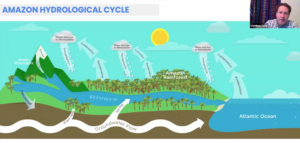
Dr. Matt Finer, Senior Research Specialist at Amazon Conservation and Director of MAAP, presented a novel look at the phenomenon and suggests that we should actually be thinking about 2 tipping points in the Amazon – the now well-known “point of no return” from a rainforest ecosystem to that of one more closely resembling a dry savanna, AND the Amazon going from a carbon sink to a carbon source.
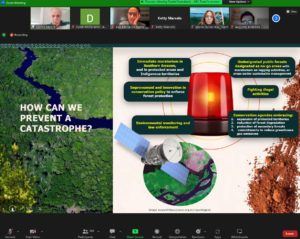
To put this novel idea into perspective, attendees first heard from Dr. Carlos Nobre, premier meteorologist, ecologist, and co-chair of the Science Panel for the Amazon. Dr. Nobre explained that while we may be quickly approaching the tipping point, there are strategies to avoid reaching it, saying, “Restoring traditional forest functions and fusing new and traditional scientific knowledge will help us prevent a catastrophic tipping point. Recognizing and enforcing indigenous rights is critical.”
Attendees also heard from Carlos Ardila Espinosa, Representative from the Congress of Colombia, who provided invaluable insight into how conservation efforts are conceptualized in legislation. Representative Espinosa offered an example from the Putumayo department of Colombia where it is already evident that acknowledging and respecting indigenous peoples’ rights to their own territories allows not only restorative transformations to the forest to occur; but also provides the space for more diverse forest-based economies to take hold which ultimately fosters forest conservation. Representative Espinosa offered this important question, “How can we raise the value of 1 hectare of forest to equal or surpass 1 hectare that has been cleared for pasture? This is an integral hurdle to incentivizing conservation in legislation.”
Ana María González Velosa, Senior Environmental Specialist with the World Bank provided moderation for the event and Manuel Pulgar-Vidal, fresh home from attending the COP27 in Egypt, left attendees with his closing remarks emphasizing the urgency with which conservation in the Amazon must be addressed.
Establishing New Protected Area in the Bolivian Amazon
On May 4, the Arroyo Bahía Conservation Area in the Bolivian Amazon was declared, protecting nearly 10,000 acres of forests and critical water sources for the surrounding local populations. It is the municipality of Cobija’s first protected area. Arroyo Bahía provides valuable ecosystem services in the form of freshwater to 80,000 local people in Bolivia, Peru and Brazil due to the city’s location in the department of Pando, which shares a western border with Peru and a border with Brazil to the north and east. Thus, protecting ecosystems that traverse multiple countries supports the livelihoods of thousands of people. 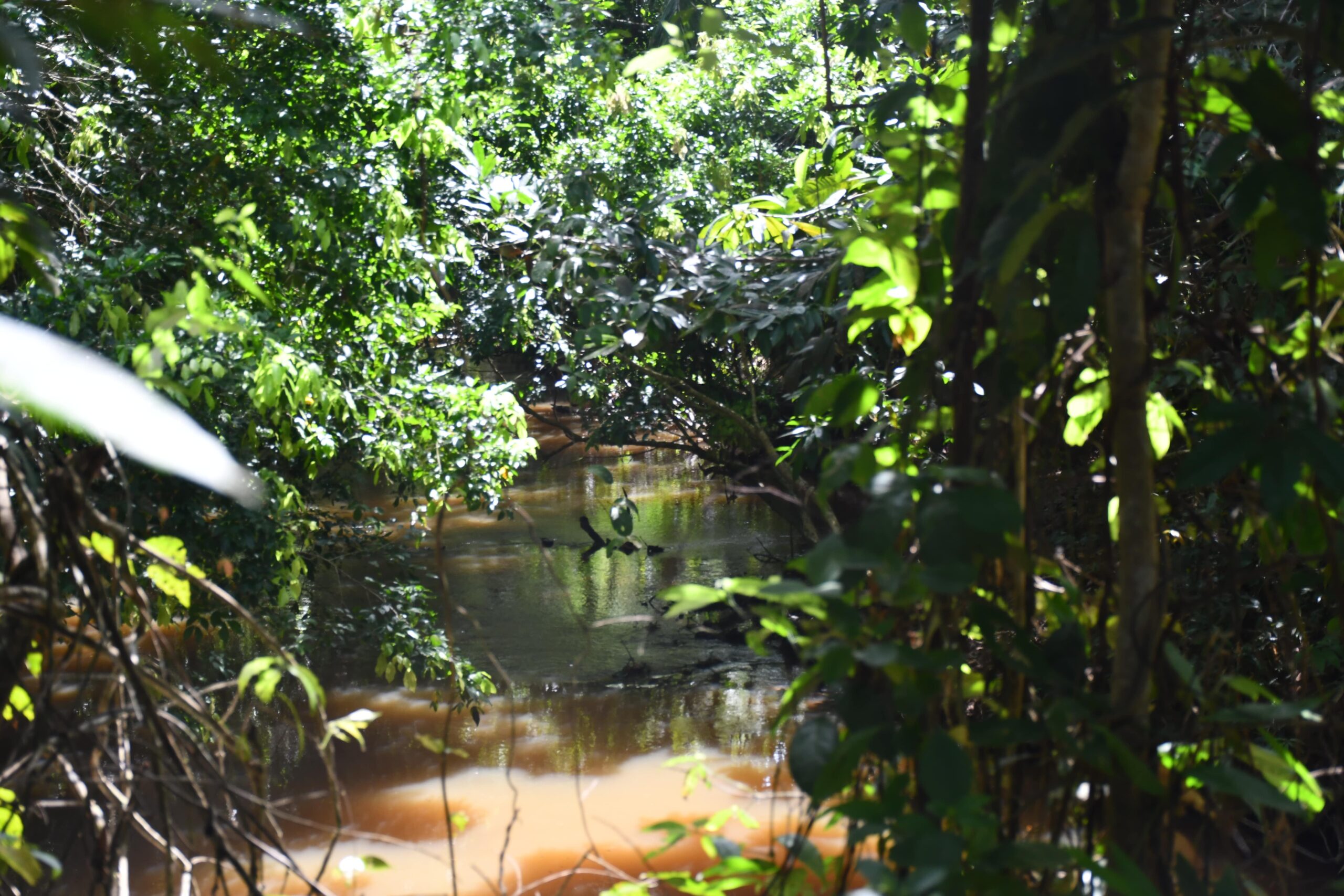
The declaration of this protected area is timely as the upper and middle sections of the Arroyo Bahía basin have been experiencing significant deforestation over the past five years, according to research carried out by Josefina Marín, who serves as the environmental economist of Fundación Natura Bolivia. One of the main reasons for the loss of forest cover has been the increased demand of clearing areas for raising livestock, which causes erosion and soil compaction. This affects the regeneration of forest species and contributes to the sedimentation and clogging of 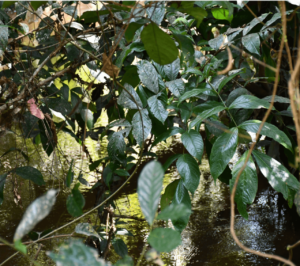 streams. Consequently, the forest coverage of the banks of the tributary rivers to the stream have been drastically reduced from 1985 to 2008. This, along with the pollution from the dumping of waste, has had terrible consequences for water quality and causes drinkability problems. The Brazil nut harvest has also been reduced lately due to the decrease in the production of the trees and the drop in prices.
streams. Consequently, the forest coverage of the banks of the tributary rivers to the stream have been drastically reduced from 1985 to 2008. This, along with the pollution from the dumping of waste, has had terrible consequences for water quality and causes drinkability problems. The Brazil nut harvest has also been reduced lately due to the decrease in the production of the trees and the drop in prices.
Thus, the establishment of the Arroyo Bahía Conservation Area will protect this basin from contamination and deforestation. It will also support the local peoples’ livelihoods, and mitigate floods and fires. Additionally, the basin is home to great diversity in spite of continuously encroaching human activity. 351 plant species have been identified in two sampling sites, along with 35 amphibian species, 13 reptiles, 185 bird species, 32 mammals, and 30 fish species.
To all our supporters, friends, volunteers, and allies for the Amazon who helped us establish and achieve numerous programs and projects that support a thriving Amazon. We are truly lucky to have such a generous and motivated network that shares our vision for the future of conservation. We could not do it without you and we are lucky to have you on our side. Here’s to another year of hard work and lasting impact.
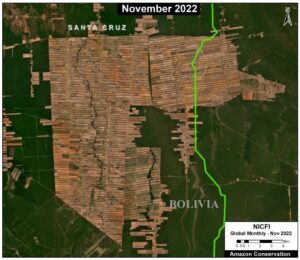 In the first two installments of a new series monitoring soy deforestation in Bolivia, we provide more accurate estimates of total soy production-based deforestation and some of the major actors driving this significant source of deforestation.
In the first two installments of a new series monitoring soy deforestation in Bolivia, we provide more accurate estimates of total soy production-based deforestation and some of the major actors driving this significant source of deforestation.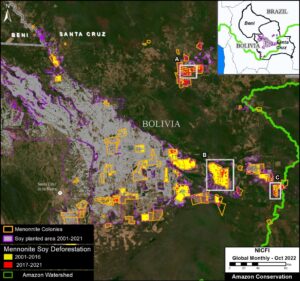

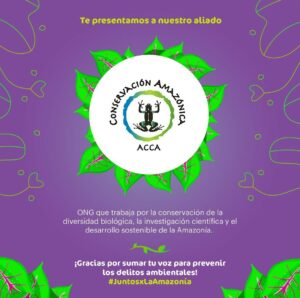 Our sister organization in Peru, Conservación Amazónica – ACCA, has joined forces with
Our sister organization in Peru, Conservación Amazónica – ACCA, has joined forces with 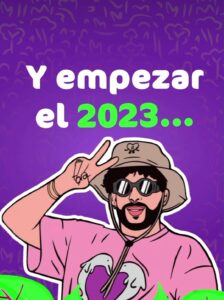
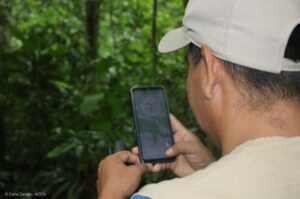
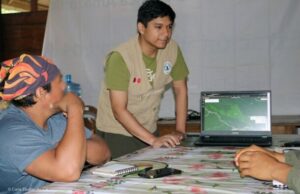 “This tool greatly facilitates the collection and organization of geospatial data in the field at no cost, achieving greater efficiency in information management, reducing processing times and having an intuitive graphical interface that favors the visualization of the collected data. The great thing about this tool is the large number of additional cloud-based plugins that can be included, the great technical support and regular updates it receives”, highlighted Osmar Yupanqui, GIS and Remote Sensing assistant at our Peruvian sister organization, Conservación Amazónica – ACCA and who was responsible for the training.
“This tool greatly facilitates the collection and organization of geospatial data in the field at no cost, achieving greater efficiency in information management, reducing processing times and having an intuitive graphical interface that favors the visualization of the collected data. The great thing about this tool is the large number of additional cloud-based plugins that can be included, the great technical support and regular updates it receives”, highlighted Osmar Yupanqui, GIS and Remote Sensing assistant at our Peruvian sister organization, Conservación Amazónica – ACCA and who was responsible for the training.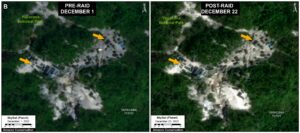
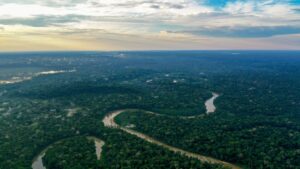
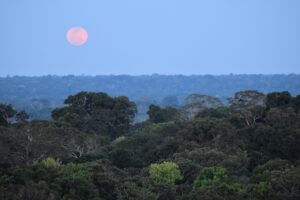
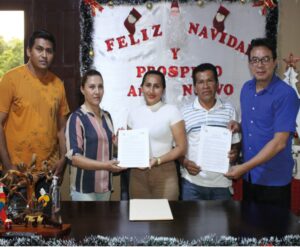
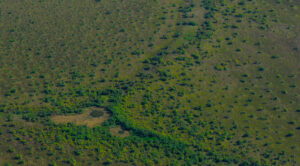
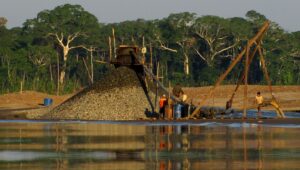
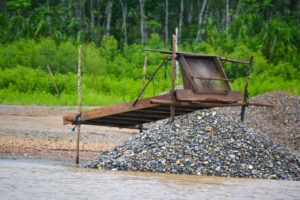



 With support from SOS Orinoco, we published MAAP reports
With support from SOS Orinoco, we published MAAP reports 



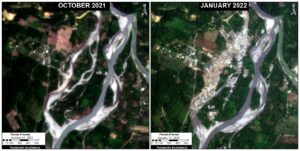
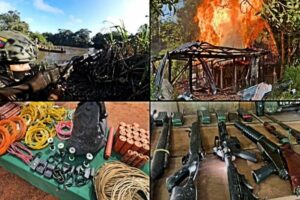
